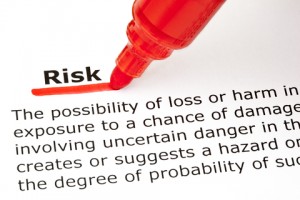 The year is 2014 and the number of fires in the UK has fallen significantly, yet fire still remains a life-threatening risk to many businesses and households. In 2011 and 2012, fire and rescue authorities attended to more than 272,000 fires of which more than 380 were fatal. Luckily, the Health and Safety Executive (HSE) has put in place measures that are bound to cut down on preventable fires significantly. Regular fire risk assessment is one of the suggested methods.
The year is 2014 and the number of fires in the UK has fallen significantly, yet fire still remains a life-threatening risk to many businesses and households. In 2011 and 2012, fire and rescue authorities attended to more than 272,000 fires of which more than 380 were fatal. Luckily, the Health and Safety Executive (HSE) has put in place measures that are bound to cut down on preventable fires significantly. Regular fire risk assessment is one of the suggested methods.
Though it is highly advisable to use a qualified and accredited fire safety expert for your assessment, it is equally important that you have some basic fire management and assessment knowledge and here are some of the basic ones:
1. Identify Potential Ignition Sources
You need to identify all those materials that might cause and fuel a fire and the oxygen sources that will help it burn. A potential source would include a source of heat that could get hot enough and cause a fire. You need to look out for indications of near misses like charred electrical plugs, scorch marks on furniture, discoloured plugs among others. This is a simple way of spotting overlooked hazards.
While identifying the oxygen sources that will help the materials to burn faster, it is important for you to understand that air flow is majorly categorised into two sources that is the mechanical and the natural air flow. Natural air flow is the air that circulated through, doors and windows. On the other hand mechanical air flow depends on mechanical devices like air conditioners that have been put in place to help with air circulation. Many homes and businesses alike will have both systems working hand in hand and so it is important for you to understand every aspect about them so that you can easily shut them down in case of a fire.
2. Identify those at Risk
It is important for you to identify all the people who are at risk in case of a fire outbreak. You need to identify the number of people working in such sectors and also the number of people visiting such sites at any given time.
You also need to identify and have the exact figures of people with disabilities or those who might have a problem leaving the premises promptly in case of a fire. These will include physically chanllenged people, old people, or parents with children. It is also important for you to have a record of people who work alone such as security staff and cleaners.
3. Evaluate
You need to evaluate the probability of a fire starting. Examine the entire premise for any omissions, acts, or accidents that may cause a fire to start. This may need you to actually carry out a mock drill to test your safety preparedness. Once you have identified the risks, it is time for you to reduce or completely remove the causes of fire if practicable.
4. Record and 5. Train
After evaluation, it is now time for you to record findings including action taken to mitigate fires. Recording of findings is not only important but also a requirement by the Fire Safety Law. It is also important that your staff have basic fire fighting strategies and receive adequate fire safety training such as a Fire warden.
You need to carry out regular fire risk assessments and remember that if a near miss or a fire occurs, then that means that the existing assessment is not working and you need re-assessment from a qualified fire risk assessment expert.
Veritas Consulting is home to highly qualified and experienced fire assessment experts who will easily and immediately assess your premise for fire risks. Contact us today for immediate help.

A chartered (fellow) safety and risk management practitioner with 20+ years of experience. David provides a healthy dose of how-to articles, advice and guidance to make compliance easier for construction professionals, Architects and the built environment. Get social with David on Twitter and Linkedin.




One Comment
SNG Fire are leading UK based fire risk assessors, qualified to carry out fire risk assessments. We provide a nationwide Fire Risk Assessment service starting from as little as £135.
Fire Risk Assessments